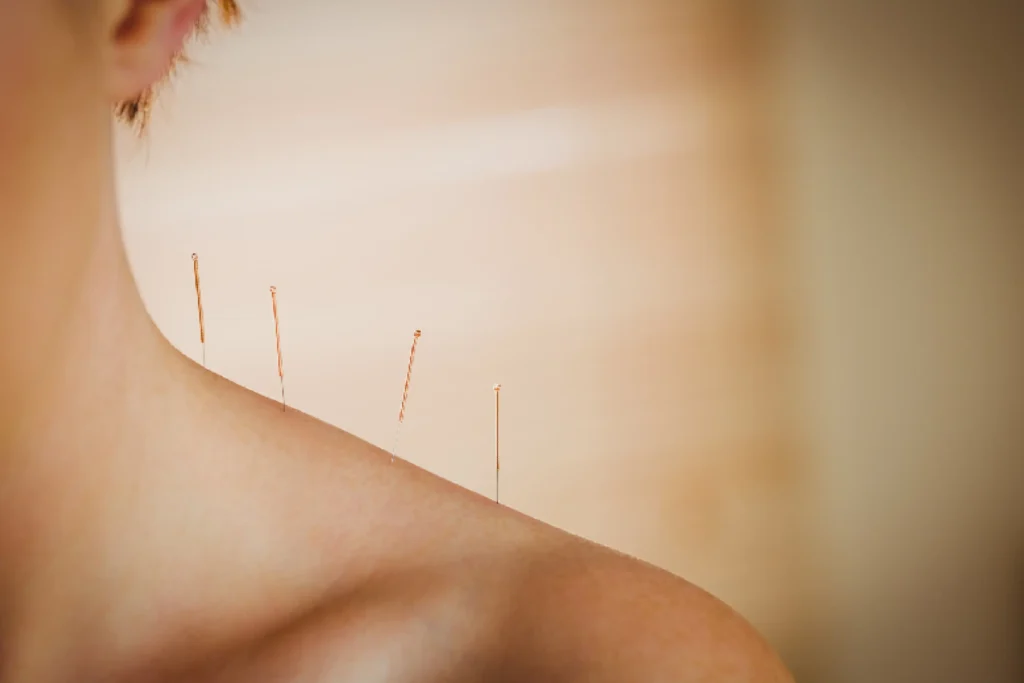Muscle knots are tensed and stiff areas of muscles that are characterized by pain upon touch or even unprovoked.
Muscle knots are mainly caused by the fibers being overstretched where they end up becoming stiff, thereby rendering such areas immobile due to the excruciating pain experienced.
Knots in muscles are a common issue in people of all ages.
They can occur due to minor issues such as adopting the wrong sitting and standing posture, overuse of the muscles when exercising, and even sleeping or sitting in the same position for a long period.
Acupuncture, an approach borrowed from the Ancient Chinese Medicine that involves inserting very thin needles into the pain centers seems to offer a risk-free solution to muscle knots among other health challenges.

Acupuncture Treatment Can Help with Muscle Pain
Since every health approach has to be backed up with some explanation, this article is dedicated to educating you on how acupuncture helps loosen up knotted back muscles.
Increasing Circulation
One of the several things that happen upon insertion of acupuncture needles into the trigger points is improved circulation. Enhanced circulation in turn affects three elements that have been found to contribute to the loosening of knots.
Nutrient Delivery
Increased circulation of blood to centers of knotted muscles helps in the oxygen distribution and other healing materials including lymphatic fluid, all of which are responsible for the repair of torn fibers of the muscles.
Removal of Toxins
Toxins, in the form of metabolic wastes such as lactic acid, are responsible for exacerbating pain related to muscle knots. When circulation improves after needle insertion, blood removes the toxins and replaces them with repair nutrients including oxygen and lymphatic fluid.
Reduced Inflammation
Increased circulation has also been found to reduce inflammation of tensed fibers, thereby offering relief from the knots.
Pain Relief
Endorphin neurotransmitters attach to the opioid receptors in the hypothalamus part of the brain, which is responsible for the regulation of pain in the body. This helps in enhanced pain management, which offers better tolerance to knot-related pain.
Mood Improvement
Acupuncture, through needle insertions, stimulates the body’s release of natural pain-relief chemicals (endorphins). These have effects on various body functions, including the knotted muscles. Bad mood, stress, and sometimes depression, which are responsible for exacerbating knot pain, are also alleviated by the production of endorphins after an acupuncture session.
Neuromuscular Effects
Driving needles into certain points has been found to interrupt pain signals and modulate the nerve pathways that make muscles remain contracted for too long. This works by relaxing the tensed fibers and easing the knots.
Trigger Point Release
The first effect of inserting needles in knots or as they are commonly known, trigger points, is a twitch. This is the first response against the needles, which often leads to the muscle relaxing and the knot diminishing or disappearing.
Synergy with Various Therapies
Besides needle insertion, acupuncturists often involve therapies to support accelerated recovery from knotted muscles. These include:
Massage Therapy
Massage supports knot release by straightening and easing tension in the pain centers. A massage before acupuncture can facilitate the needles to go deeper for more effective knot release. In addition, massage works by enhancing circulation, which brings with it more nutrients for accelerated healing from painful knots.
Physical Therapy
Stretching and strengthening prescribed by a therapist can help offer the further release of muscle knots by alleviating muscle tension and pain.
Heat Therapy
Applying heat therapy before or after an acupuncture session can further relax muscles and enhance blood flow which brings with it recovery materials such as oxygen and lymphatic fluid. Combined with the increased removal of toxins that come with increased blood circulation, recovery from muscle knots is experienced more effectively.
Acupuncture can be an important tool in managing knotted back muscles, particularly when used as part of a holistic treatment plan. Depending on genetic predisposition, extent of knots, and unique healing rates, the number of sessions needed to heal the knots is different for various people. Some will experience relief immediately after the first session and recover fully in the second or third session. Other people will take them up to 6 sessions to recover fully. Due to the few mild side effects associated with the therapy, it is imperative that you vet your acupuncturist fully. Working with a licensed and extensively experienced therapist can accelerate the recovery lead times and offer more relief. You can do an analysis on your expert by looking at reviews and other people’s testimonials.

